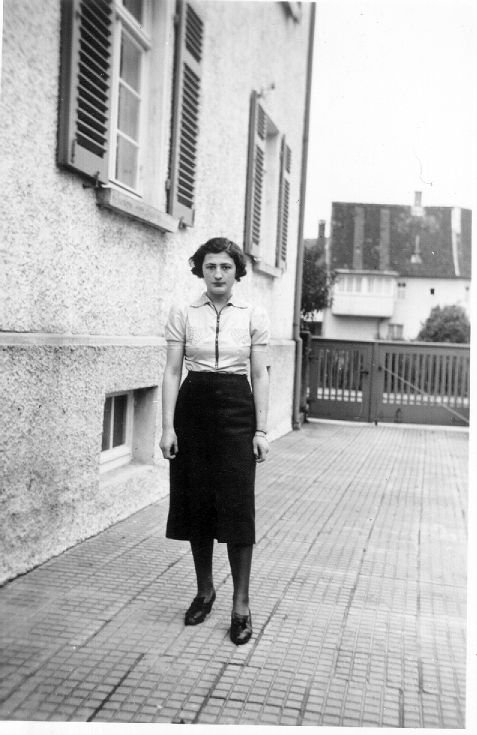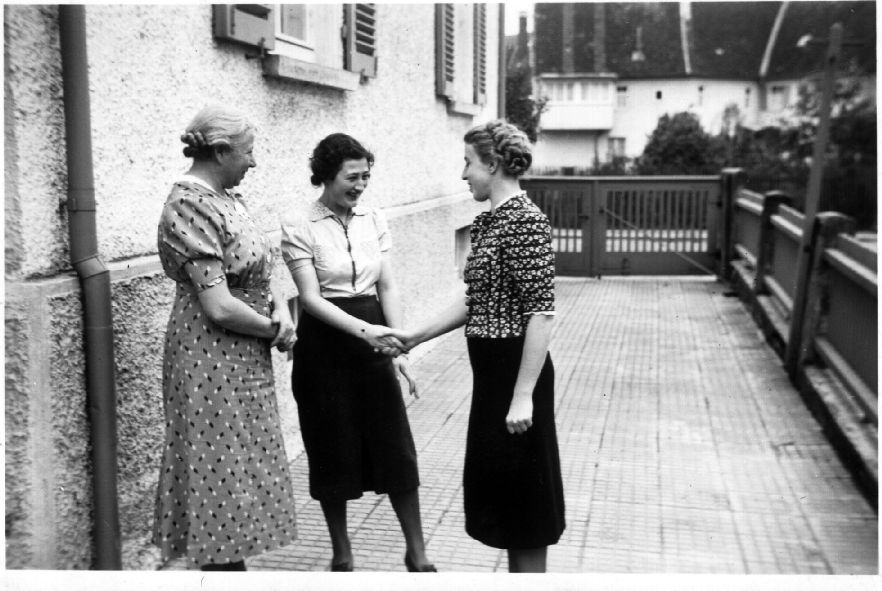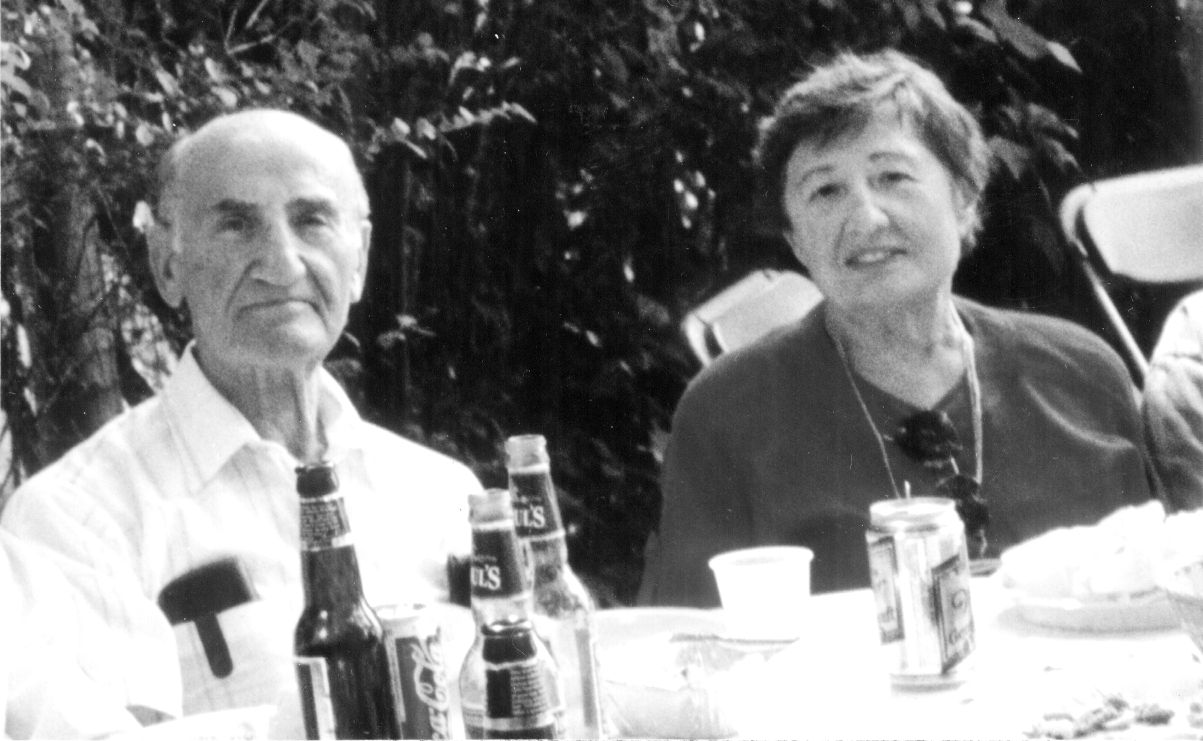The Jewish
Community
of
La
Book Page 429
Translated by: Katja Sonnen
Supervisor: Dr. Robynne, Flynn-Diez,
Ruprecht-Karls-Universität Heidelberg,
Institut für Übersetzen und Dolmetschen Englischabteilung
Karl Gustav Eppstein, born June 14, 1873, in Muehringen, died May 16, 1926 in Rottweil] OO Therese (Resl, later called Razel or Resa), maiden name Obernauer, born September 28, 1887, in Laupheim, died 1985 in New York.
- Ilse, born November 3, 1913, in Rottweil,
- Gertrud (Trudl, later called Trudy) Henriette, born November 11, 1920, in Rottweil, lives in New York
Therese Eppstein, the only sister to four brothers, Hugo, Max, Willhelm and
Hermann Obernauer, married Karl Gustav Eppstein and moved to Rottweil. The
couple had two daughters, Ilse and Gertrud (who was called Trudl). Karl
Gustav died when he was just 39 years old and his young widow moved back to
her childhood home in Laupheim with her two daughters. There she lived on
the ground floor, while her brother Hermann Obernauer lived on the first
floor with his family. Together with her sister-in-law Olga, Resl took care
of the extremely big garden, where they grew all the produce they needed to
be self-sufficient.
Already in the 1920s, Ilse Eppstein went to France to live with a family, so
she could learn French; she apparently also went to stay in a household in
England and, as a result, spoke English as well. Early on she had made an
effort to immigrate to the US, and in 1937, she received an Affidavit from
Carl Laemmle and was able to leave Germany in the same year.
Penniless, Ilse first moved to Washington Heights in northern New York,
where there were already many Jewish immigrants and which had therefore been
nicknamed "Frankfurt on Hudson". She succeeded in finding work as a maid at
the family of the secretary of New York's governor. This family did, most
kindly, lend her the money needed to facilitate her sister Trudl´s
immigration to America.
At first, Trudl (now called Trudy) also worked as a maid for this family's
household. Both sisters saved every penny they earned so their mother, too,
could leave Nazi-Germany.
With heavy hearts, it was then time to say goodbye. Two pictures of Trudl
from these days of departure in 1938 can be found on the next page.
Resl, however, still had to witness the so-called
Reichskristallnacht in Laupheim.
In the middle of the night of November 9, someone knocked on their door on
56 Kapellenstrasse. Resl wakes up
and was shocked. Her brother Hermann is told to get dressed and come with
them. After Resl has composed herself, she does muster up the courage to
take one of the SA-men (SA = abbreviation of
Sturmabteilung,
German for "Assault Division") by the arm and ask him: "What are you doing?"


Eighteen-year-old Trudl Eppstein just before her immigration to the US in 1938.
A rare snapshot on the right: Trudl Eppstein saying goodbye to two acquaintances
from Steinerstrasse, Lina Dilger (on
the right) and Pauline Frank.
(Pictures: Picture archive museum Laupheim)
When
Resl arrives in the New World, she is over 50 years old. She and her
daughters move in together with a distant relative, mostly to keep everyday
costs at a minimum. Resl (now called Razel or Resa) finds a job as an
assembly-line worker in a lighter factory, where both her daughters will
also work later on. Resl herself has trouble with the new language, but
scolds Trudy for speaking English too often and for even using it in
conversations with German relatives and friends. Trudy does that on purpose,
so that many people assume she has already forgotten the German language,
which, of course, was not true. Even in her old days, she regrets to "have
never really learned English properly" and that by now, she does "not speak
German well anymore, either". In contrast to her sister, Trudy learns the
language along the way, for example by reading the newspaper and from
whatever she overhears.
As America enters the war, all three of the women make their living in
companies important to the war; Trudl, for example, works for IBM at a card
punch machine.
Ilse marries in the early 40s. Her husband Irving produces handkerchiefs.
Later on they move to Queens, where they open a handkerchief-shop. The
couple has two children, Peter and Elaine.
Trudl marries, too. Her husband Kurt Fraenkel is from Germany, just like she
is. The couple remains childless. Kurt sells fabrics, and later also
greeting cards.

Trudy Fraenkl, maiden name Eppstein, with her late husband Kurt, who was
from Biblis. New York, 1995.
(Picture: Archive Dr. Bayer)
For three years they move to Omaha, an area Trudl hated. She works in a
retirement home and - as a member of a Jewish charity - volunteers in a
correction facility. From Omaha they return to New York City.
Trudl and her husband have no financial problems. They travel to Europe, but
never visit Germany. Kurt's family had fallen victim to the Shoah. Trudl,
however, is always interested in Laupheim and happy about news from home,
for example as the family of Udo Bayer visits the Fraenkls. She tells them
that she has had her father’s headstone in Rottweil restored.
Today, Trudl still lives in New York City, she is 88 years old, ill and has
little good feelings when asked about the happenings before her emigration.
She still thinks that the citizens of Laupheim were cowards who merely
watched as their neighbors were abused and their lives threatened. She does
not want there to be a lot of fuss about her person and would have preferred
not to be memorialized in this book.


